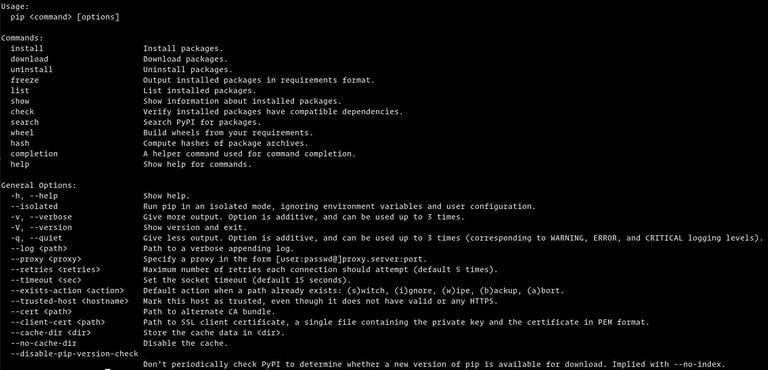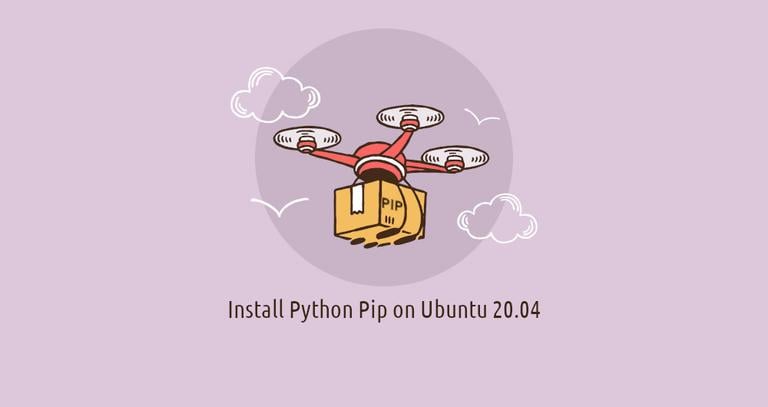How to Install Python Pip on Ubuntu 22.04
Published on
•4 min read

Pip is a package manager for Python used to install, upgrade, configure and manage project dependencies. With pip, you can search, download, and install packages from Python Package Index (PyPI) and other package indexes.
This guide explains how to install pip for Python 3 and Python 2 on Ubuntu 22.04. We will also show you the basics of installing and managing Python packages with pip.
Before You Begin
Python comes in two flavors; Python 2 and Python 3. Python 3 is included in the base system installation, and Python 2 can be installed from the default ubuntu repositories. Users are encouraged to use Python 3.
Python modules can be installed globally (accessible for all projects and users) or on a project basis.
Generally, when installing a Python module globally, you should prefer installing the module’s deb package with the apt
tool as they are tested to work properly on Ubuntu systems. Use pip to install a module globally only if there is no deb package for that module.
Python 3 packages are prefixed with python3-, and Python 2 packages are prefixed with python2-.
You should prefer using pip within a virtual environment only. Python Virtual Environments allows you to install Python modules in an isolated location for a specific project rather than being installed globally. This way, you do not have to worry about affecting other Python projects.
Installing pip for Python 3
Installing pip for Python 3 on Ubuntu 22.04 is a straightforward process. Run the following commands as root or sudo user in your terminal:
sudo apt updatesudo apt install python3-pip
The command above also installs all the dependencies required for building Python modules.
Once the installation is complete, verify it by checking the pip version:
pip3 --versionThe version number may vary, but it will look something like this:
pip 22.0.2 from /usr/lib/python3/dist-packages/pip (python 3.10)Installing pip for Python 2
Pip for Python 2 is not included in the Ubuntu 22.04 repositories. We’ll be installing pip for Python 2 using the get-pip.py script.
If you already don’t have Python 2 installed on your system, install it by running:
sudo apt updatesudo apt install python2
Use curl
to download the get-pip.py script:
curl https://bootstrap.pypa.io/pip/2.7/get-pip.py --output get-pip.pyRun the script as sudo user using the python2 binary to install pip for Python 2:
sudo python2 get-pip.pyThe command above installs pip globally. If you want to install it only for your user, run the command without sudo. The script also installs the setuptools and wheel packages that allow you to install source distributions.
Verify the installation by printing the pip version number:
pip2 --versionThe output will look something like this:
pip 20.3.4 from /usr/local/lib/python2.7/dist-packages/pip (python 2.7)How to Use Pip
In this section, we show you a few useful basic pip commands. To get a list of all pip commands and options, type:
pip3 --help
You can get more information about a specific command using pip <command> --help . For example, to get more information about the install command, type:
pip3 install --helpInstalling Packages with Pip
The most basic function of the pip tool is to install a package. Let’s say you want to install Numpy
To install the latest version of a package, you would run the following command:
pip3 install <package_name>For example, to install the NumPy package, you would type:
pip3 install numpyTo install a specific version of a package, append == and the version number after the package name:
pip3 install numpy==1.18.5pip3 with pip2 if using Python 2.Installing Packages with Pip using the Requirements Files
requirement.txt is a text file containing a list of pip packages with their versions required to run a specific Python project.
To install a list of requirements specified in a file, use the following command:
pip3 install -r requirements.txtListing Installed Packages
To list all the installed pip packages, use the “list” subcommand:
pip3 listUpgrade a Package With Pip
To upgrade an already installed package to the latest version, enter:
pip3 install --upgrade package_nameUninstalling Packages With Pip
To uninstall a package, run:
pip3 uninstall package_nameConclusion
We have shown you how to install pip on your Ubuntu machine and manage Python packages using pip. For more information about pip, visit the pip user guide page.
If you have any questions or feedback, feel free to comment below.


